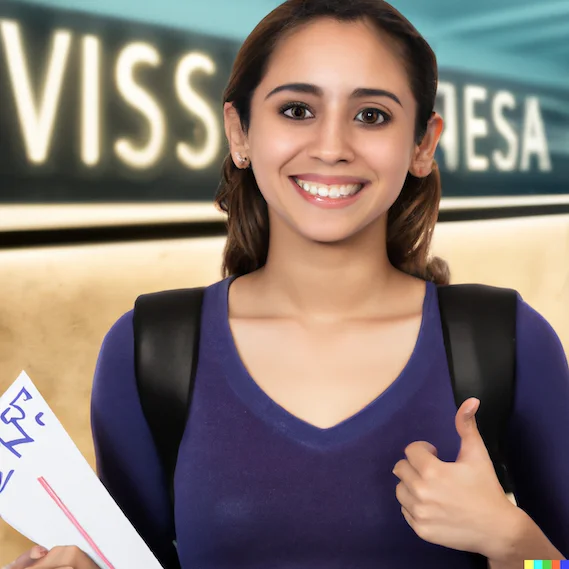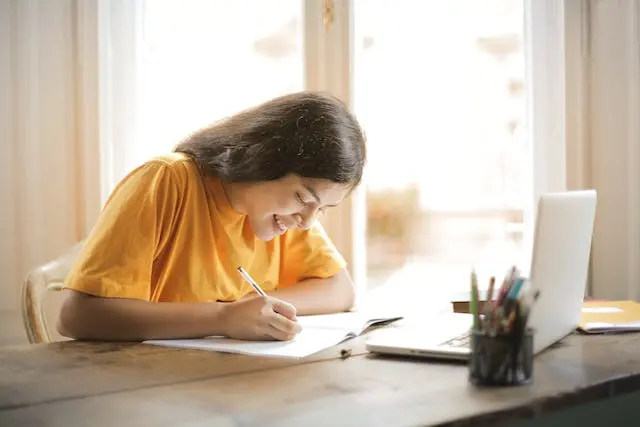After F1 Visa Rejection: How to Bounce Back in Your Next Interview

Key Highlights
- Visa rejection isn't personal; it's a legal process.
- Identify the reason for your rejection before reapplying.
- Reassess documents, financial proof, and intent to return.
- Ensure your paperwork is complete and organized.
- Practice common interview questions and body language.
- Provide clear financial proof, including bank statements.
- Know your university and course well, with clear goals.
Hey there, future international student! If you're reading this, chances are you've hit a little bump on your road to studying in the United States. That bump being a visa rejection. Ouch. It stings, doesn't it? But believe me, when I say, it's not the end of the road. In fact, consider it a detour that’s teaching you exactly how to navigate the path better next time. So, let’s buckle up and figure out how to make your next F1 visa interview a surefire success.
Understanding Visa Rejections: It's Not Personal
First off, let's clear the air. A visa rejection isn't a reflection of your potential or worth. It’s a legal process, with rules that sometimes can be as perplexing as a plot twist in a thriller novel. The consular officers have a tough job ensuring that everyone who gets a visa will comply with the laws. It’s not you; it’s the process.
Step 1: The Groundwork Post-Rejection
After a visa rejection, take a deep breath and give yourself a moment. It's important not to rush into reapplying without understanding why you were rejected in the first place. Were your documents incomplete? Was there an issue with your financials? Or maybe, the officer wasn't convinced about your intent to return home after your studies? Pinpointing the reason is key.
Example: Let’s say your visa was rejected because the officer wasn't convinced about your ties to your home country. Reflect on this. Maybe during the interview, when asked about your post-graduation plans, your answers were vague. Next time, prepare a clear, concise response.
Step 2: Reassess and Realign
Now that you know the reason, it's time to reassess your application. You’ll want to look at every nook and cranny of your paperwork and your answers during the interview. Align everything with the requirements. If you were lacking in financial proof, strengthen that area. If your academic intent wasn't clear, clarify your study plans with more specifics.
Example: Suppose the issue was financial. You showed bank statements, but they were recent deposits, which raised questions. This time, show a consistent financial history. Maybe add a letter of support from a sponsor, explaining their relationship to you and their commitment to your education.
Step 3: Paperwork Perfection
Getting your documents in order is like packing for a vacation – everything you need should be there, neatly organized, and easy to show. Make a checklist of everything the consulate needs. Transcripts, proof of admission, financial statements, ties to your home country – everything should be up-to-date and ready to go.
Example: Create a detailed checklist. Include items like your passport, I-20 form, admission letter, bank statements, scholarship letters, and proof of ties to your home country (like property documents or a letter from your future employer).
Step 4: Practice Makes Perfect
Interviews can be nerve-wracking, but practice makes perfect. Conduct mock interviews with a friend or an advisor. Record yourself to hear your tone and assess your body language. Remember, it's not just what you say; it's how you say it.
Example: Conduct mock interviews focusing on common questions like "Why did you choose this university?" or "What are your plans after graduation?" Record yourself to check for clarity and confidence in your answers.
Step 5: The Mindset Shift
Approach your next interview with a fresh mindset. You're not there to plead your case but to present it confidently. You’re a student who’s going to contribute to and benefit from the American educational system.
Example: Instead of thinking, “I need to convince them to give me a visa,” shift to, “I am qualified and prepared to study in the U.S., and I can clearly demonstrate my purpose and plans.”
Step 6: Show Genuine Intent
One of the biggest red flags for visa officers is the suspicion that an applicant doesn't intend to return home after studying. So, in your interview, be clear about your ties to your home country and your plans post-graduation.
Example: Prepare to talk about your family ties, job prospects in your home country, or involvement in community activities, indicating your strong intent to return after your studies.
Step 7: Financial Clarity
Money matters. You need to show that you can afford the education and the living expenses in the States. Be prepared with solid evidence, like bank statements, scholarship letters, or funding from relatives.
Example: If your uncle is sponsoring your education, have him draft a sponsorship letter. Include his bank statements of the past six months to show financial stability.
Step 8: Know Your University and Course
You should know your university and your course like the back of your hand. Why did you choose it? How does it align with your career goals? These details matter.
Example: Research your course thoroughly. Be ready to explain how studying Mechanical Engineering at MIT aligns with your goal of enhancing the automotive sector in your home country.
Step 9: The Reapplication
Once everything is aligned – your mindset, your documents, your practice – it's time to reapply. Do this with confidence. You’ve learned from your previous experience and are better prepared this time.
Example: Before reapplying, double-check all documents. Revise your SOP (Statement of Purpose) if necessary, making sure it reflects your academic goals and career aspirations clearly.
Step 10: On the Interview Day
On the day of the interview, keep calm. Dress smartly, arrive early, and remember to greet the officer with a smile. Be honest, concise, and positive. Your attitude can make a huge difference.
Example: Dress in business casual. Be at the embassy 30 minutes early. During the interview, when asked about your choice of university, answer confidently with specifics about the program and how it aligns with your career goals.
What If You're Rejected Again?
It happens, and it's okay. You can try again. Sometimes it's just about finding the right officer or the right time. But if you're facing multiple rejections, it might be worth getting advice from a visa expert.
In Conclusion
Bouncing back from a visa rejection is all about understanding, reassessing, preparing, and presenting yourself anew. It's about showing growth, resilience, and clarity in your intent. So, take that rejection letter, learn from it, and turn it into your stepping stone for success.
Remember, each attempt is a story in your larger journey. Keep your head up, your spirits high, and your preparation thorough. Your dream of studying in the US is still within reach, and with the right preparation, you’ll find yourself on a plane heading towards a life-changing experience.
Have Questions About This Topic?
Join our community to get personalized advice and share experiences with others going through similar visa processes.





